Photo

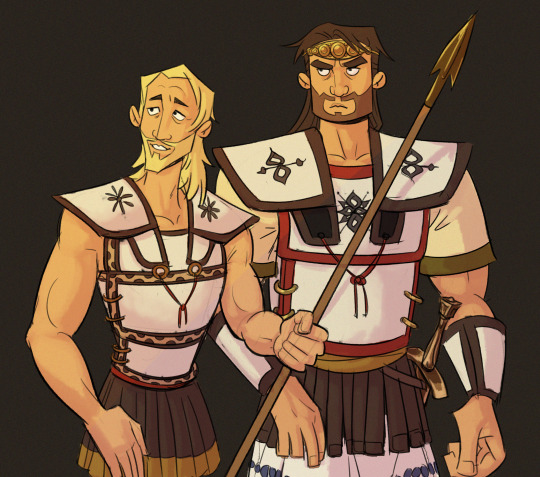
my friends: *saying smart things about fate and cyclical monomyth narrative and mimetic sublimation*
me: *tearing out pages of my iliad copy one by one and eating them*
1K notes
·
View notes
Text
*opens tumblr* *sees the 123983294th meme about how the romans just copied greek mythology and art and culture* *closes tumblr*
97 notes
·
View notes
Photo






Scenes from Homer by Janet & Anne Grahame Johnstone
5K notes
·
View notes
Text
im high and losing it a little over this
140K notes
·
View notes
Photo



The Women of Troy
Troy (2004) dir. Wolfgang Petersen
472 notes
·
View notes
Photo




I am dying, Egypt, dying
1 August 30 BCE - Mark Antony commtits suicide when sent false report by his wife, Kleopatra VII, that she had killed herself.
146 notes
·
View notes
Photo



“These past years with you have been the happiest of my life.”
1 August 30 BCE - Roman triumvir Mark Antony commits suicide, dying in the arms of his wife Hellenic queen Cleopatra VII.
176 notes
·
View notes
Text
Achilles is married to Helen and lives in Ukraine
No, that isn’t fanfiction, a joke, or even an exaggeration. Let’s talk about this surprising and little-known Greek myth.
Most people familiar with Ancient Greece have heard about Homer’s Iliad and Odyssey. What they may not know is that those texts were part of a wider Epic Cycle, which told the story of the Trojan War from Thetis and Peleus’ wedding to Odysseus’ death. The Epic Cycle is now lost, and known only from summaries and fragments quoted by other authors. One of those is Proclus. In his summary of the Aethiopis, an epic that tells of Achilles’ fighting against Penthesilea and Memnon and later his death, Proclus writes about Achilles’ funeral:
Καὶ Θέτις ἀφικομένη σὺν Μούσαις καὶ ταῖς ἀδελφαῖς θρηνεῖ τὸν παῖδα· καὶ μετὰ ταῦτα ἐκ τῆς πυρᾶς ἡ Θέτις ἀναρπάσασα τὸν παῖδα εἰς τὴν Λευκὴν νῆσον διακομίζει.
And Thetis, having come with the Muses and her sisters, laments her son; and after this, snatching her son up and away from the pyre, Thetis carries him to the White Island.**
Pausanias, an author from the 2nd century AD, gives us more details about this White Island (Description of Greece 3.19.11):
Ἔστιν ἐν τῷ Εὐξείνῳ νῆσος κατὰ τοῦ Ἴστρου τὰς ἐκβολὰς Ἀχιλλέως ἱερά· ὄνομα μὲν τῇ νήσῳ Λευκή, περίπλους δὲ αὐτῇ σταδίων εἴκοσι, δασεῖα δὲ ὕλῃ πᾶσα καὶ πλήρης ζῴων ἀγρίων καὶ ἡμέρων, καὶ ναὸς Ἀχιλλέως καὶ ἄγαλμα ἐν αὐτῇ.
There is an island in the Euxine Sea, at the mouth of the Ister, that is sacred to Achilles; its name is the White Island, its circumference is twenty stadia, it is entirely wooded and full of wild and tame animals, and on it there is a temple and a statue of Achilles.
Istros, or Ister, is the Ancient Greek name for the Danube. This allows us to locate the White Island: it is what is now known as Snake Island, Ostriv Zmiyinyy (Острів Зміїний) in Ukrainian, or Fidonisi (Φιδονήσι) in Greek. It belonged to the territory of Romania until 1948 (more or less), after which it became part of the USSR. Since 1991, it is officially a territory of Ukraine.
Achilles’ link to the area was already established by the 7th/6th century BC, as evidenced by the poet Alcaeus, who calls him “ruler of the Scythians” (Ἀχίλλευς ὀ τὰς Σκυθίκας μέδεις, fr. 354). He seems to have been the object of a cult on the island for several hundred years, traces of which may have been found in 1823 (but which were later destroyed by the construction of a lighthouse). More than that, Pausanias gives us some interesting details about what, exactly, this divinised Achilles was doing on the island (Description of Greece 3.19.12-13):
Ἐλθόντα δὲ ἡ Πυθία Λεώνυμον ἀπέστελλεν ἐς νῆσον τὴν Λευκήν, ἐνταῦθα εἰποῦσα αὐτῷ φανήσεσθαι τὸν Αἴαντα καὶ ἀκέσεσθαι τὸ τραῦμα. Χρόνῳ δὲ ὡς ὑγιάνας ἐπανῆλθεν ἐκ τῆς Λευκῆς, ἰδεῖν μὲν ἔφασκεν Ἀχιλλέα, ἰδεῖν δὲ τὸν Ὀιλέως καὶ τὸν Τελαμῶνος Αἴαντα, συνεῖναι δὲ καὶ Πάτροκλόν σφισι καὶ Ἀντίλοχον· Ἑλένην δὲ Ἀχιλλεῖ μὲν συνοικεῖν, προστάξαι δέ οἱ πλεύσαντι ἐς Ἱμέραν πρὸς Στησίχορον ἀγγέλλειν ὡς ἡ διαφθορὰ τῶν ὀφθαλμῶν ἐξ Ἑλένης γένοιτο αὐτῷ μηνίματος.
The Pythia sent Leonymus (a general from Crotona), who had come to her, to the White Island, saying that Ajax would appear to him there and heal his wound. In time, he healed and returned from the White Island, where he asserted he had seen Achilles, and he had seen Ajax son of Oileus and Ajax son of Telamon, and with them were Patroclus and Antilochus. Helen was married to Achilles, and she had ordered Leonymus to sail to Stesichorus in Himera, to bring him the message that the loss of his sight was due to Helen’s anger.
So if you ever wondered what happened to Achilles, now you have your answer: he lives on a Ukrainian island along with four other heroes from the Trojan War, as well as Helen, who is married to him and so mad at Stesichorus, a poet who criticised her, that she made him blind.
And in case you’re curious, this is what the White Island looks like nowadays:

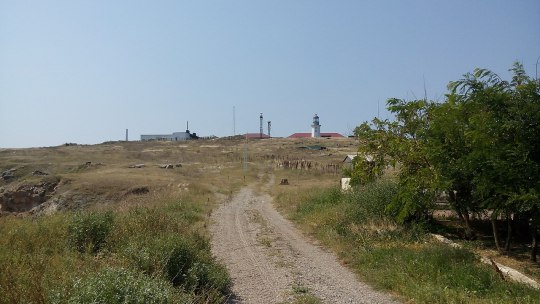
**All translations are my own.
905 notes
·
View notes
Text
When I see Dido represented as a very young woman with very pale skin:

54 notes
·
View notes
Photo

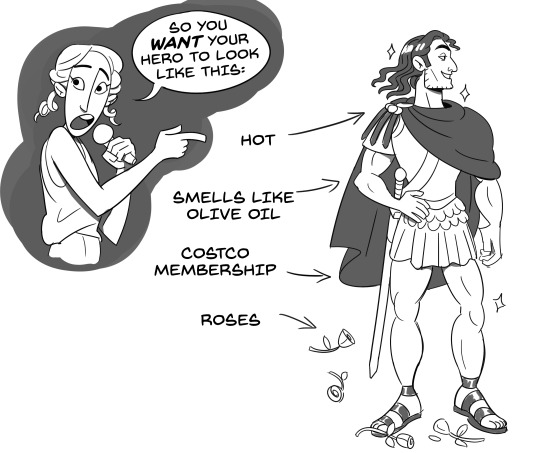
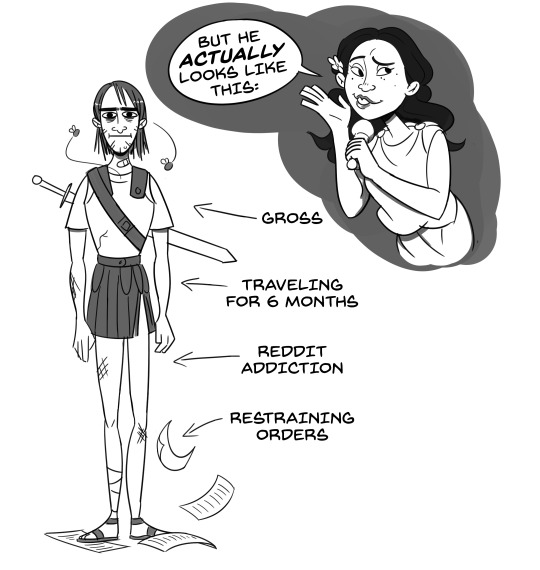

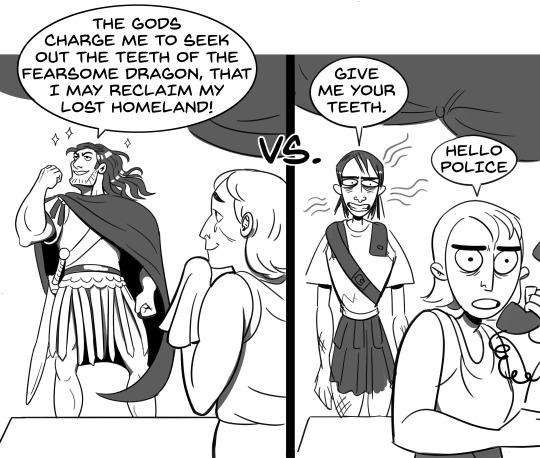

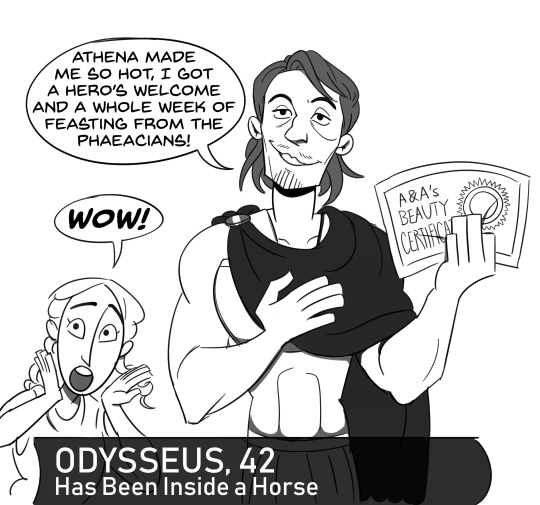



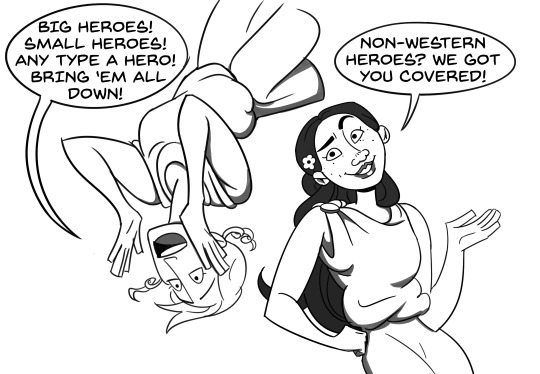





–
based on these passages from the odyssey and the aeneid (and i think it might have happened in the iliad too, though i can’t remember where):
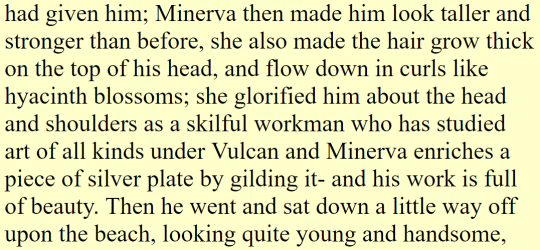

athena and aphrodite know EXACTLY what matters and that is HEROIC BIMBOFICATION!
69K notes
·
View notes
Photo

“Der junge Held wird von Athena beschützt”(Athena protects the young hero) by Gustav Blaeser, 1854
8K notes
·
View notes
Photo
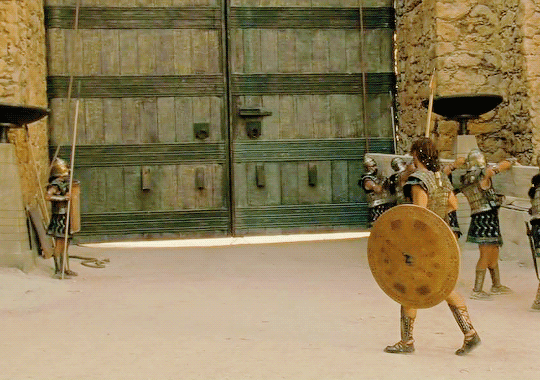






HECTOR AND HELEN IN TROY (2004) DIR. WOLFGANG PETERSEN
339 notes
·
View notes
Text
new aesthetic, like cottagecore but for the sea. Mediterraneancore. Blue and yellow pattern tiles. Blood oranges and lemons. a wide brim hat. balconies. decadent, warm, mysterious. angelic but the types of angels whose beauty puts u to silence
15K notes
·
View notes
Text

Livia (I sec.), dal Teatro di Ercolano, Museo Archeologico Nazionale, Napoli.
437 notes
·
View notes
Photo

sometimes you read a translation of an ancient greek play and you come across a line so relatable you just have to contemplate it for a moment
1K notes
·
View notes

